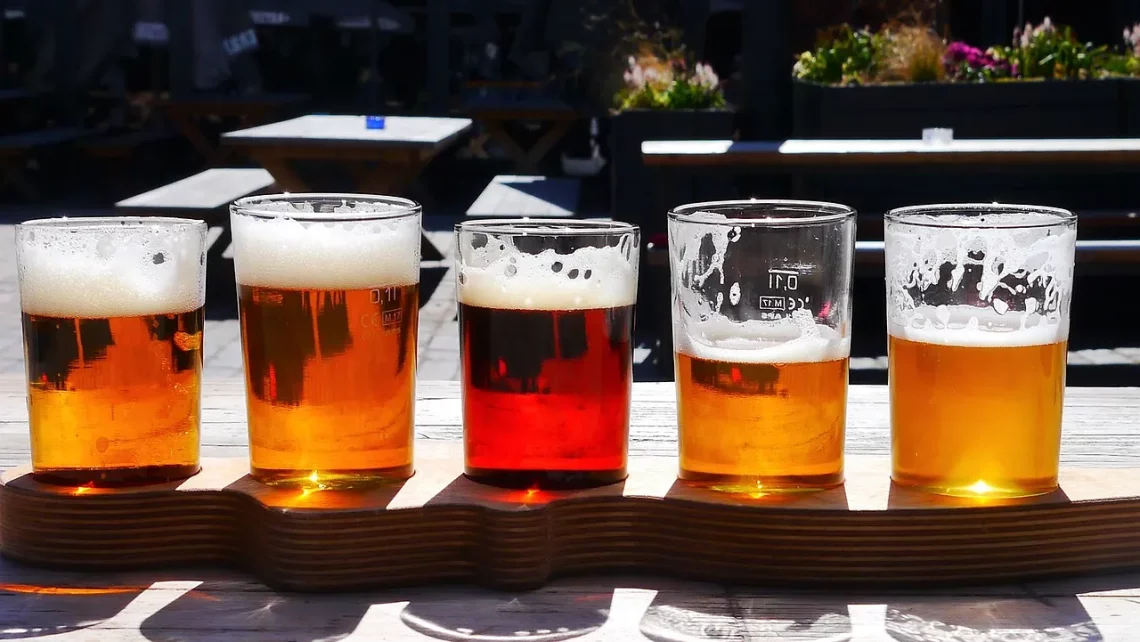
Exploring the Rich History and Flavor of Old English Beer
The tradition of brewing in England is steeped in history, reflecting a rich tapestry of culture, craftsmanship, and community. Old English beer, known for its distinctive flavors and characteristics, has evolved through the ages, from humble beginnings in monastic brewhouses to the modern craft beer movement. This age-old beverage not only serves as a refreshing drink but also acts as a social lubricant, bringing people together in pubs and festivals across the country.
The art of brewing beer is intertwined with the agricultural practices of the region, utilizing local ingredients and traditional methods. The influence of geography, climate, and even historical events has shaped the styles of beer produced, resulting in a diverse range of options for enthusiasts. Each sip tells a story, revealing insights into the people and places that have contributed to the beverage’s development.
Understanding the allure of Old English beer means delving into its origins, the brewing techniques that define it, and the cultural significance it holds today. As we explore this fascinating world, we uncover not just a drink, but a symbol of heritage that continues to thrive and adapt, ensuring that its rich legacy endures for generations to come.
The Origins of English Brewing
The origins of English brewing can be traced back to ancient times when early civilizations began fermenting grains. Archaeological findings suggest that brewing practices existed well before the advent of written history, with evidence of beer production found in the remnants of ancient settlements. This early form of brewing was rudimentary, often using whatever grains were available, such as barley and wheat, mixed with water and left to ferment naturally.
Monasteries played a significant role in the evolution of brewing in England. During the Middle Ages, monks became skilled brewers, producing beer not only for their consumption but also for sale. The surplus generated by these brews helped fund monastic activities, and the quality of their beer gained a reputation for excellence. Monastic brewing was characterized by a focus on purity, with an emphasis on using high-quality ingredients and meticulous brewing techniques that laid the groundwork for modern practices.
Regional variations soon emerged, influenced by local resources and brewing traditions. For example, the use of hops became widespread, replacing traditional herbs used for flavoring and preservation. This shift not only enhanced the flavor profile of the beer but also contributed to its longevity, making it more appealing for trade. As commerce expanded, so did the reach of English beer, with exports increasing and new styles developing in response to consumer preferences.
By the Renaissance period, brewing had transitioned from monastic control to commercial enterprises, with large breweries emerging in urban centers. This shift marked the beginning of a more structured brewing industry, with the establishment of laws regulating beer production, known as the Beer Purity Law, ensuring that only specific ingredients could be used. This legislation aimed to protect consumers and maintain the quality of beer, further solidifying its importance within English society.
The Brewing Process and Ingredients
The brewing process is an intricate dance of science and art, where each step influences the final product’s flavor, aroma, and appearance. Understanding this process provides insight into what makes Old English beer unique. The primary ingredients include water, malted barley, hops, and yeast, each contributing essential characteristics to the brew.
Water quality is paramount in brewing, as it constitutes the majority of the final product. Different mineral compositions in water can significantly affect the taste of the beer, making it a crucial consideration for brewers. Regions known for their distinct water profiles, such as Burton-on-Trent, have become famous for particular beer styles, showcasing how geography shapes flavor.
Malted barley serves as the backbone of Old English beer, providing fermentable sugars that yeast converts into alcohol. The malting process involves soaking barley grains in water, allowing them to germinate, and then drying them in a kiln. This process not only develops the sugars needed for fermentation but also imparts various flavors, ranging from sweet and nutty to rich and roasted, depending on the malting techniques and the level of roasting.
Hops are another vital ingredient, introduced to beer for both flavoring and preservation. The bitterness from hops balances the sweetness of the malt, creating a harmonious flavor profile. Different hop varieties contribute distinct aromas and flavors, ranging from floral and citrusy to earthy and spicy. The timing of hop additions during the brewing process can further influence the beer’s overall character, showcasing the brewer’s creativity and expertise.
Finally, yeast is the catalyst for fermentation. This microorganism consumes the sugars from the malt, producing alcohol and carbon dioxide. Different yeast strains can impart unique flavors and aromas, influencing the final taste of the beer. The fermentation process varies in duration and temperature, allowing brewers to experiment and refine their recipes, leading to an endless variety of styles and profiles.
Beer has long been more than just a beverage in England; it is a cultural emblem that embodies community, tradition, and celebration. Pubs, often referred to as the heart of English social life, serve as gathering places where people share stories, forge friendships, and celebrate milestones. The pub culture is deeply ingrained in English society, with a range of establishments from cozy local inns to bustling bars, each offering a unique atmosphere.
Traditionally, pubs have been venues for local events, from quiz nights to live music, fostering a sense of belonging among patrons. The role of beer in these social settings cannot be overstated, as it serves to enhance the experience and create an inviting environment. The communal aspect of enjoying a pint with friends or family reflects the values of camaraderie and connection that beer embodies.
Festivals dedicated to beer further highlight its cultural importance. Events such as beer festivals attract enthusiasts from all over, celebrating the diversity of brews available. These gatherings provide an opportunity for brewers to showcase their creations, allowing attendees to sample a wide array of styles and flavors. Festivals not only promote local breweries but also encourage appreciation for the craftsmanship involved in brewing.
Moreover, beer has a historical significance tied to events and traditions. For instance, specific beers are often associated with holidays and celebrations, such as Christmas ales or summer lagers. These seasonal brews reflect the changing times and the agricultural cycles that contribute to brewing. Additionally, beer has been a part of traditional ceremonies and rituals, further embedding it into the cultural fabric of English life.
As the craft beer movement continues to grow, it revitalizes the appreciation for traditional brewing techniques while encouraging innovation. This fusion of old and new ensures that the legacy of Old English beer remains relevant, continually evolving to meet the tastes and preferences of modern drinkers.
Modern Trends in Old English Beer
In recent years, the landscape of Old English beer has witnessed a significant transformation, driven by the rise of the craft beer movement. This resurgence has sparked renewed interest in traditional brewing methods and styles while fostering innovation and experimentation. Brewers are increasingly exploring historical recipes, local ingredients, and unique flavor combinations, leading to an exciting variety of offerings.
Small, independent breweries have emerged across the country, each with its own vision and identity. These craft brewers prioritize quality and authenticity, often sourcing ingredients from local farms and using traditional techniques alongside modern technology. This emphasis on locality not only supports the regional economy but also creates beers that reflect the character of their surroundings.
Additionally, the demand for diverse flavor profiles has led to the revival of lesser-known styles of Old English beer. Traditional ales like bitter, porter, and mild are being reinterpreted and celebrated, often with innovative twists. Brewers are experimenting with different hop varieties, adjuncts, and aging processes to create unique brews that appeal to a wide range of palates.
Sustainability has also become a priority within the brewing community. Many breweries are adopting eco-friendly practices, from sourcing organic ingredients to implementing water conservation measures. This commitment to sustainability resonates with consumers who are increasingly conscious of the environmental impact of their choices.
Furthermore, the global popularity of craft beer has introduced Old English beer to a broader audience. International beer enthusiasts are discovering the rich history and flavor profiles of English brews, leading to collaborations between local and international brewers. These collaborations often result in innovative blends that showcase the strengths of both brewing traditions.
In conclusion, the evolution of Old English beer reflects a dynamic interplay between tradition and modernity. As brewers continue to push boundaries while honoring the past, the future of this cherished beverage looks promising. Whether enjoyed in a local pub or at a vibrant festival, Old English beer remains a testament to the craftsmanship, culture, and community that defines it.
**Disclaimer:** This article is not intended as medical advice. For any health-related issues, please consult a qualified healthcare professional.




